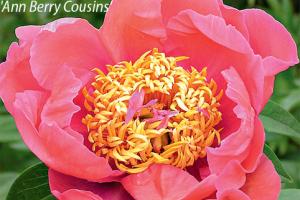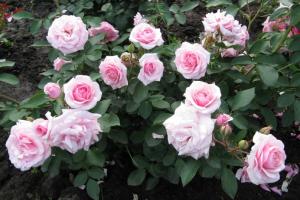Despite the ease of caring for this representative of the Amaryllis family, inexperienced gardeners experience a number of difficulties in growing this wonderful tropical beauty. Someone is having a very difficult time getting the Amazon lily to bloom and is trying to answer the question - how to make Eucharis bloom?
To answer this question, it is first necessary to analyze the conditions of its content. With proper care of Eucharis, it blooms up to three times a year. If your Amazon lily has not bloomed even once this year, then you need to reconsider the conditions for caring for it. The most likely reasons why Eucharis does not bloom:
Constant drafts, direct sunlight on the leaves or lack of lighting.
Eucharis blooms very beautifully. The flowers look like daffodils with drooping heads.With all these misunderstandings, The solution to the problem is the following - changing the location of Eucharis:
— in drafts, place it in a place where cold air will not reach it;
— if the plant was exposed to direct sunlight- shade it or move it to a window sill that is less lit during the day;
— if your Eucharis is standing somewhere in the back of the room, arrange additional lighting for it.
Important! Under unfavorable conditions, such as lack of light and temperature changes, the formation of bulbs slows down, resulting in a lack of flowering for your plant.
A small number of bulbs.
Eucharis - a “family” plant, therefore, when planting/transplanting it, a prerequisite is a sufficient number of daughter bulbs in the pot.) As a rule,5 bulbs are considered sufficient. If your Eucharis has less than 3 of them, then most likely you will not be able to force it to bloom until it has acquired enough children.
In this case,There is only one solution to the problem - wait until the Amazon lily grows children.
No rest period.
For flowering, Eucharis requires a period of rest.To flower, Eucharis needs to gain strength; it can only do this while in a dormant period. For example, in winter, feeding is stopped and watering is reduced to a minimum, thereby allowing the plant’s bulbs to “rest.” Watering the Amazon lily is necessary only to prevent the bulbs from drying out. The solution to the problem is to give Eucharis a rest period at least once a year - in the winter season. The rest period lasts about 1-1.5 months.
Important! When Eucharis blooms 3 times a year, there should be periods of rest after each flowering. The duration of the rest period is on average one month.
The air is too dry.
Eucharis loves spraying and does not like dry air.Even during the dormant period, the leaves must be sprayed or wiped with a damp cloth, since the air in apartments is dry, especially in the winter. With low humidity, Eucharis leaves may curl, bulb division may slow down, and flowering may not be expected.
The solution to the problem is simple - humidify the air or spray the leaves of the Amazon lily.
Important! If your plant is on a south or southeast windowsill, spraying should only be done in the early morning or late evening to avoid sunburn of the plant's leaves.
Large spacious pot.
For Eucharis, it is better to choose a pot that is proportional to it or a little too small.Most plants bloom in narrower pots, where they are a little cramped. This is how nature intended it: by releasing a peduncle, the plant tries to continue its genus by reproducing by seeds. Besides, in in a large pot, the bulb will take longer to grow children, since she will need to grow many more children than in a narrow pot.
The solution to the problem is to be patient and wait until Eucharis has grown sufficiently and become bushy, or transplant the bulbs into a narrower pot.
Important! Eucharis - reacts very painfully to transplantation, so try not to injure the bulbs. Such stress can also delay flowering.
How to stimulate Eucharis flowering?
Important! Stimulation of flowering is possible only if all care recommendations are followed. Otherwise, stimulation will not help achieve the desired effect.
Stimulation is carried out with the drugs “Bud”, “Tsveten” or “Bloom”. Recommendations for the use of these drugs can be found on the packaging of these stimulants. We advise you to use the minimum dose for Eucharis. Stimulants, like fertilizers, are applied to moist soil.
An elegant indoor flower that appeared in subtropical forests on the banks of the Amazon River has two common names:
- eucharis (eucharis);
- Amazon lily.
This flower is loved by gardeners for its unpretentiousness, beautiful flowering twice (three times) a year and a pleasant delicate aroma.
The most common varieties are considered to be: Eucharis grandiflora or Grandiflora, Eucharis white, Eucharis toothless or Callifuria.
Eucharius has large, oval, pointed leaf blades. Their width is approximately 20 cm. Length is about 40 cm. Color is dark green. The leaf surface is slightly wrinkled, with prominent veins. The leaves of the plant live for several years. Young leaves are initially curled into a tube, but straighten as they grow.
The flowers are large (up to 10 cm), snow-white, slightly drooping downwards. They are found on long (up to 60 cm), straight, leafless stems.
How to care for eucharis at home
Where to put the pot with eucharis
Eucharis does not like bright lighting. He prefers partial shade. Therefore, it is not advisable to place a flower pot with a plant on the southern windows. Lily will feel comfortable on an east or west window or on a shelf inside the room. In summer, the flower can be taken out into the garden or onto the balcony. Just first you need to prepare a special canopy for it, which will protect the plant from the rays of the sun and from rain.
Air humidity and temperature
In the room where the Amazonian plant is located, for its active growth and flowering, it is necessary to maintain a temperature of 24º to 28º Celsius. At lower temperatures, its flowers become smaller. After flowering (in the resting phase), the flower is provided with a temperature range from 17º to 19º Celsius. If the room temperature drops to +10ºC or lower, the lily will begin to shed its leaves, and the plant bulb may rot.
It is not necessary to organize special humidity in the room where the flower is located. It needs to be sprayed periodically and the leaves wiped off dust with a damp cloth.
During flowering, these manipulations should be performed with extreme caution. Water that gets on flowers can cause brown spots to form on them.
How to water eucharis
Moderate watering is considered optimal for the plant. In the case of the Amazon lily, they adhere to the following condition: “It is better to underfill than overfill.” Watering is carried out with settled water at room temperature. The excess water that remains in the tray of the flower pot is drained. The next watering during the growth period of the lily is carried out when the earthen ball dries out by a third of the volume, and during the dormant period, when the earth dries out, by half the volume.
What and how to feed Eucharis
To feed eucharis during the growing season, alternately use mineral and organic fertilizer complexes for plants in the flowering phase. They can be purchased at the store. The frequency of feeding is twice a month. During the dormant phase, the plant is not fed with fertilizers.
Common mistakes in caring for eucharis
Ignorance of the main requirements of cultivation plays a negative role in the development and growth of the Amazon lily. The home flower Eucharis requires proper care, and if agricultural practices are followed, it gives a luxurious appearance of green leaves and an abundance of delicate flowers.
If the leaves on Eucharis turn yellow and die taking turns is a natural process. Yellowing of all leaves at the same time indicates problems with the plant such as:
- excessive or weak watering;
- low (less than +10ºC) room temperature;
- sunburn of leaves.
The plant can be “cured”. It is necessary to remove it from the pot and inspect the bulb for the presence of putrefactive zones. Cut off such areas, treat the cuts with ash, dry them and replant the plant.
- If the plant is left for a long time without watering, its leaves will become limp. Watering should restore the elasticity of the foliage. But if there is hypothermia due to a window being open in winter or transportation, the leaf turgor may not be restored.
- If the leaves of an Amazon lily curl and wither, then it is either sick in a draft or its roots are damaged.
Reproduction of Eucharis by children

When growing a plant indoors, the easiest way is to use the vegetative method. Moreover, the Amazon lily has a large number of “children”. In March or April, they can be planted in separate containers with previously prepared soil.
An important point: only well-formed “babies” can be separated from the mother plant. Otherwise, the bulbous seed material will die.
How to plant eucharis, look at the video:
When and how to replant eucharis
Amazonian lily does not like transplants. Therefore, if the plant is healthy, blooms well and does not “fall out” of the flower pot, it can not be disturbed for three to four years.
A healthy flower is transplanted when many “children” have been formed and they interfere with the normal growth of the flower.
The daughter material can be used to propagate the plant, or it may not be separated from the mother flower. In the latter case - transplanting into renewed soil without separation - you can achieve more luxuriant flowering of the lily.
March is the most favorable month for replanting a plant. A healthy plant is transplanted into prepared soil using the transshipment method, without disturbing the earthen coma.
If the flower bulbs are rotten, they are carefully removed from the soil and washed with water. Then the rot is removed (cut). The cut surface is thoroughly disinfected by immersing it in a fungicide solution. Then sprinkle the cut with wood ash.
Depending on the initial planting material (bulb with and without leaves), there are two options for planting the plant.
Planting Amazon lily with leaves

Leaves are not trimmed before planting, only those that are yellowed and dying are removed.
- Planting depth - 5-6 cm.
- The container for planting is tall, not wide, with a hole in the bottom and drainage at the bottom made of expanded clay or small pebbles.
- - the first 3 weeks are moderate, as the soil dries out.
Planting an Amazon lily without leaves
Before planting, the leaves are completely cut off at a height of 1 cm above the bulb.
- Planting depth - the top of the bulb looks 0.5 cm above the soil surface.
- The container for planting is 2-3 cm larger in diameter than the diameter of the bulb.
- The soil is half sand.
- Watering is moderate for the first three weeks, as the soil dries.
- The location is bright and warm.
If you planted an Amazon lily bulb without leaves, the plant will grow new leaves approximately 40 days after planting. The fact that the top of the bulb is above the surface of the ground will make it easy to observe the growth and development of the plant.
Earth for eucharis

Eucharis loves fertile soil with good water and breathability.
The most convenient way is to purchase special soil in a store. You need to choose soil marked “For plants of the amaryllis family.” If this is not possible, you can prepare it yourself by mixing the following ingredients:
- humus 1 share;
- leaf soil 2 shares;
- river sand 1 share;
- peat 0.5 share.
The plant must be provided with drainage from coconut shells, expanded clay, and small stones. It will remove excess moisture.
Why eucharis does not bloom at home and how to make it bloom

Provide the plant and it will delight you with beautiful, fragrant flowers two or three times a year. The lily's flowers open one at a time and bloom for up to ten days each. Gardeners can create an artificial watering and fertilizing schedule for the lily, which will ensure that the plant blooms multiple times throughout the year.
- January + 1st half of February = rest period
- 2nd half of February + 1st half of March = active growing season
- 2nd half of March + 1st half of April = flowering phase
- 2nd half of April = active growing season
- May + 1st half of June = rest period
- 2nd half of June + 1st half of July = active growing season
- 2nd half of July + 1st half of August = flowering phase
- 2nd half of August = active growing season
- September + 1st half of October = rest period
- 2nd half of October + 1st half of November = active growing season
- 2nd half of November + 1st half of December = flowering phase
- 2nd half of December = active growing season
Why doesn't Eucharis bloom? Errors in care video
Sometimes the plant does not bloom even though it seems to be in optimal conditions.
This means the gardener made a mistake. Here are the most common:
- Incorrect landing. The young plant is planted in a wide container, the diameter of which is many times greater than the diameter of the bulb. The tighter the plant is in the pot, the faster it will bloom.
- Sudden change in room temperature. The plant will form weak flower arrows or its bulb will rot, and flowering will not occur if the eucharis is constantly in a draft and in a state of stress.
- The resting phase has not been maintained. It should last about a month and a half. During this period, the plant is not fed and watered rarely. The lump of earth should be half dry. This is checked using moisture indicators, wooden sticks or the weight of the pot. During the dormant period, the plant needs to have good lighting.
Eucharis diseases
Gray rot
This disease is often found in plants of the amaryllis family, which includes the Amazon lily. The causative agent of the disease is the fungus Botridis. Plants located in damp rooms with low temperatures are susceptible to the disease. First, the leaf plates of the affected flower soften, lose turgor and darken at the edges. Then the infected areas are covered with gray mold and they die.
Prevention measures: removal of infected areas of the plant, treatment of the flower with products containing copper (copper sulfate solution, Fundazol, Topsin-M).
Stagonosporosis (red burn)
Plants located in rooms with sharp temperature fluctuations or waterlogged plants are susceptible to the disease. First, oblong red spots appear on the leaves, buds, and bulbs. Then the leaves wither, the flower stalks and buds bend and bend down, and the bulbs rot. Eucharis withers and dies.
Preventive measures: use of high-quality bulbous material for planting, treating the bulbs with a fungicide before planting for half an hour (Rovral, Oxifom, Maxim) and subsequent drying (48 hours).
Pests
Fungus gnat (sciarids)
Black midges. Its females place eggs directly on the root of the plant. The larvae that emerge from the eggs feed on the root tissues and inhibit it. The result is a weakened, non-flowering plant.
The reason for the appearance of midges is waterlogged soil in a flower pot.
Preventive measures: Treatment (watering) of the soil with Oktara solution at the rate of 0.8 g per liter of water, adjusting the frequency of watering.
Spider mite
Appear on something that is in a dry and warm room. The plant weakens, the leaves turn yellow and droop.
Prevention measures: in case of a small number of pests - treatment of the above-ground parts of the flower with a solution of laundry soap, in case of massive damage - treatment with acaricides (Kleschevit, Fitoverm, Sunmite, Akarin).
Amaryllis scale
The pest settles in the scales of the bulb. The flower dries out, the leaves and peduncles lose their original shape.
Prevention measures: spraying the plant and soil in the pot with insecticidal preparations (Aktara, Akarin, Vertimek).
Eucharis, an unusual lily intended for indoor growing, has long and successfully taken root in the middle zone. The plant does not require care, however, failure to comply with a number of rules leads to the fact that its decorative effect drops significantly, and what it was planted for does not occur. We are, of course, talking about flowering, which is not difficult to achieve, but sometimes problems with this stage of eucharis development still arise.
Why doesn’t eucharis bloom at home?
Most often, problems with eucharis flowering are caused by improper care of the plant, and only 10-12% are attributed to factors beyond the control of its owner. Therefore, the flowering of eucharis is almost entirely in your hands.
- A pot that is too large is the likely cause of buds not setting. The peculiarity of this plant is that its root system must completely “embrace” the lump of earth in which it sits. Until it reaches this position, it will send all its forces to the roots to cover the soil, and therefore flowering will be delayed indefinitely.
- The bulb has not entered the adult phase. There is also some reference here to the previous point about the roots not fully covering the ground, but there is another nuance: the bulb is not yet ready to give birth to children, after which buds are set on fresh shoots. In such a situation, there is nothing left but patient waiting.
- Violations of the schedule of activity and rest, leading to disruptions in the biological cycle of eucharis. Everything here is quite simple: unlike other plants, eucharis should be at rest not 1, but 2 times a year, and if it happens that it does not take the allotted time to rest, its activity also turns out to be insufficient, and flowering is simply there is no strength left.
Read also:
In addition, the absence of buds may be accompanied by other symptoms. In particular, you can notice complaints that eucharis leaves turn yellow and die, which, of course, does not contribute to the appearance of flowers. What is the reason?

- It is worth immediately noting that we are not talking about a natural change in cover: if 2-3 leaves turn yellow and fall off, and after (7-10) days the situation repeats, there is no reason to worry. It is much worse if, in addition to color changes, dark spots form on the surface of the leaf, increasing in size, after which they begin to die.
- The reason for such a deterioration in the condition of the plant most often lies in violations of the root system: it can be hypothermia or waterlogging, the latter is often accompanied by rotting in a severe phase.
Of course, it is reasonable to assume that with such problems, eucharis does not bloom. What to do?
- A transplant is the most reasonable option. However, this should not be a simple move of the bush from pot to pot, but with preliminary disinfection and cleansing: the roots must be checked for the presence of affected areas, which must be eliminated, after which the cut areas are dried with crushed charcoal. Then a new pot is prepared with fresh soil, where the eucharis is transferred.
After replanting, it is advisable to pay special attention to the plant and adjust the key parameters of its care: watering, lighting, air temperature.
How to make Eucharis bloom?

We managed to figure out the reasons for the possible absence of buds, but now it’s worth understanding how to prevent such a situation, or how to correct it. Experts remind you that it will take several months for the flower to return to a healthy state, so you will not be able to immediately understand how effective the measures taken were. Therefore, it is advisable to monitor the implementation of all points over a long period of time.
- Flowerpot. As already mentioned, eucharis needs a “place of residence” that is not 2-3 times larger than itself: it is recommended to take a container with a diameter of up to 20 cm, but extended upward, and place up to 3-4 bulbs there. As the flower matures, it is replanted, but this is done no more than once every 4 years, and the diameter of the pot is also selected slightly larger than the diameter of the bush. An important nuance is that replanting should be carried out after flowering, otherwise you won’t be able to wait for the last one this year. In addition, the children are not separated from the main bulb - this will also negatively affect flowering.
- Temperature regime. Eucharis needs warmth, so in summer and spring it is advisable that the thermometer does not fall below 18 degrees: this is a period of active growth. In winter and autumn, when the flower is resting, the temperature should not exceed 16 degrees, but it is better to keep it within 12-14 degrees. At the same time, sharp changes at night and during the day are unacceptable.

- Biological rhythm. The dormant period is difficult to track precisely because the death of leaves is not massive, and few people notice and understand the dropped 1-2 leaves correctly. Therefore, you should focus on the wilting of flower stalks: you need to remove them, then stop fertilizing the soil and reduce the frequency of watering. In addition, it is worth moving the pots to a cooler place, away from sunlight. It is recommended to move it back to the window only after the release of new shoots - a sign of entering the active stage.
Eucharis is a popular decorative flower with large green leaves on long petioles. With good care, it blooms 2 times a year, producing a peduncle with 6–8 buds. They can live in an apartment for up to 15–20 years.
Origin of Eucharis
Eucharis, also called Amazon lily, belongs to the Amaryllis family. Its homeland is South America, but is most often found on the banks of the Amazon River. This flower was brought to Europe only in the middle of the 19th century and, for its decorative value, it very quickly became everyone’s favorite. Indeed, its large dark green oval leaves with a pointed tip can be up to 16 cm wide and 30 cm long, and also on a petiole of 30 cm. Eucharis is quite easy to grow at home; it is often recommended for beginners.
Eucharis blooms with beautiful white flowers similar to narcissus 2-3 times a year. One peduncle contains up to 6 buds, which, when blooming, fill the room with a delicate aroma.
Eucharis bulbs are small, ovoid, up to 5 centimeters in diameter, so you rarely see more than four leaves on one plant at once. To get a lush, beautiful bush, several bulbs are planted in one pot, and they bloom much more readily this way.
Eucharis naturally grows in the lower part of the forest, where it is warm, humid and light, but without direct sunlight, so in an apartment it is better to place it on an east or west window or place it deep into the room. It is better to grow large specimens of eucharis not on the windowsill, but in free-standing pots or cache-pots.
A young leaf emerges from the ground rolled into a tube and gradually unfurls.
Varieties
In nature, Eucharis cross-pollinate very quickly, so it is quite difficult for scientists to classify them. But the most common are the following.
Eucharis grandiflora. Most common in indoor floriculture. It blooms 2–3 times a year, producing long flower stalks 70–80 cm high and ending in an inflorescence with 4–6 buds. The flowers are white, up to 10–12 cm in diameter, fragrant, and shaped like a daffodil.
Eucharis snow-white. It differs from the large-flowered one in having smaller flowers, but there are slightly more of them in the inflorescence. The shape of the flower also has distinctive features: its petals are curved upward.
Eucharis sandera. It opens 2-3 flowers in an inflorescence, each on a five-centimeter flower tube, which gives it a slightly drooping appearance. The flowers most closely resemble lilies.
Keeping indoors - table
The Amazon lily comes from the tropical jungles of South America, so a florarium is very suitable for it.
A florarium is a closed glass container for growing plants, in which a special microclimate is created: tropics, deserts.
But it is important to understand that eucharis likes to grow in groups, so mature bushes can take up a lot of space; it will be difficult to enjoy a single planting of eucharis, even if there are other plants nearby. All its power and beauty lies in the abundance of green leaves, which do not lose their decorative effect even during the dormant period.
Planting and transplanting at home
Eucharis does not really like to be disturbed, so it is replanted every 2-3 years. It is advisable to carry out this procedure in the spring, in March.
Priming
Eucharis loves fertile soil, rich in humus, moderately loose, so often in recommendations you can find the following soil composition: peat, sand, turf or leaf soil in a ratio of 1:1:1. But since it is very difficult to find turf soil for sale, and not everyone can go out into the forest and collect humus soil, the composition of the soil can be as follows: peat, sand or vermiculite, vermicompost in a ratio of 1:1:1.
Another controversial piece of advice: dry the soil completely between waterings. This is very harmful for eucharis, as it damages the roots, and the peat in the soil is difficult to soak. Based on observations of the plant, many gardeners note that soil constantly kept slightly moist with regular watering allows eucharis to develop much better than soil that dries out completely.
Pot
To flower, eucharis needs a tight pot so that the roots entwine the entire clump and similar bulbs grow nearby. Therefore, we choose a pot taking into account the size and number of plants. If it is too tall and narrow, it may periodically collapse under the weight of heavy leaves. For one plant, you can purchase a standard pot with a diameter of 12–15 cm. The height of the pot must be at least 15 centimeters.
A group of five bulbs will fit well in a 2-3 liter pot, but with further transplants the pot's volume should be increased.
Large group plantings require a stable floor planter, about 30 cm deep or higher.
When choosing a pot, remember that eucharis is replanted only once every 2-3 years and it needs a supply of nutrients and space for the children to grow.
Drainage
At the bottom of any pot in which eucharis grows it is necessary to put drainage. Most often this is purchased expanded clay of any fraction: be it small or large. But if there are large holes in your pot, then the fine expanded clay will simply spill out. A cheaper option for drainage is broken shards from clay pots, sometimes pebbles, and polystyrene foam.
Planting and replanting after purchase
Unlike its close brother hippeastrum, it is almost impossible to find eucharis bulbs for sale; more precisely, they are sold by amateur flower growers on forums and local websites. This is due to the plant’s dormant period, which passes with the leaves, which complicates the shipment of planting material.
As a rule, Amazon lilies are sold already in pots and a conscientious seller takes care of the soil and replanting is not required.
If you received a eucharis bulb from your friends without soil, but with leaves (they are usually separated when replanting an adult plant), then you should plant it like this:

Store-bought eucharis in a shipping pot must be replanted with a complete replacement of the soil, since they are often planted in clean peat and heavily watered, which can lead to bulb rot.
Detailed video about transplanting and dividing eucharis
Transshipment of plants
Every 2–3 years, it is advisable to replant eucharis into new soil and sometimes a larger pot. If dividing the bush is not planned, then transship the plant.
- The required pot is selected, with a diameter 3–4 cm larger than the previous one. Drainage is being laid
- The old plant is pulled out of the pot and carefully placed on an oilcloth or table. Falling leaves can be lightly tied with a soft belt to prevent the bush from falling apart.
- Shake the top layer of soil, usually down to the roots, and select expanded clay from below. From the side of a good bush, mostly only the roots are visible.
- Pour a layer of fresh soil into the new pot with a layer of 2–4 cm (depending on the difference between the heights of the old and new pot). We make a small mound on which we install the plants.
- Lightly twist the bush and press it into the ground so that the soil penetrates between the roots. If the old drainage is not removed, then simply place the eucharis on new soil.
- Fill the space between the plant and the walls of the pot. Compact.
- Sprinkle fresh soil on top. Water it.
Try not to replant plants in vain; if every year you injure it, separate the children from the young plant, indulging the requests of friends, then your eucharis will not bloom.
Eucharis supports
Eucharis usually supports the weight of its leaves, but often newly transplanted specimens with huge leaves fall to the sides, then they put up supports like this, placing the plant inside and preventing the leaves from falling.
Peduncles, as a rule, stand firmly and do not require support.
Care
Eucharis is decorative all year round, but in order to see its beautiful flowers you still need to follow the rules of caring for it.
Watering and fertilizing
Care in accordance with the growth cycle schedule: during the active growing season, many new leaves appear, so at this time we water it often, 2-3 times a week, especially if it is kept dry and hot.
Scheme of the life cycles of Eucharis: Roman numeral - the number of the month, the number next to it shows the first or second half of the month. Green color - active vegetation, foliage growth, red color - flowering, yellow color - plant rest
During the growth period, we regularly feed the plant; you can use a special fertilizer for bulbous plants. Very often, during the period of rapid growth of eucharis, fertilizers with a high nitrogen content are used to increase the green mass, then switching to fertilizing with potassium-phosphorus fertilizers for the establishment of flower stalks and abundant flowering. During the dormant period, eucharis is not fed.
It is advisable to water with soft water: melted snow or rain. If this is not possible, then ordinary tap water should be left in an open container (bucket, jar) for at least 1 day.
Flowering period
With proper care, eucharis can bloom 2-3 times a year. The peduncle is tall, up to 70 cm, ending in 4–6 buds, which open alternately. At this time, it is undesirable to spray eucharis, since the white petals on which the drops have fallen become covered with brown spots.
Young children bloom only at 3–4 years old, and if kept closely together, so they should be planted several bulbs in one pot.
For regular flowering, eucharis necessarily needs a change in periods of dormancy and active growth.
Why eucharis does not bloom and how to fix it - table
How a eucharis flower blooms - rare video footage
Stress as a stimulation of flowering
Most often, to stimulate flowering, eucharis is stressed - it is not watered for 3-4 weeks, by this time the leaves may even lose turgor (elasticity). But also if the plant is in a dark room or it’s winter outside, then you can illuminate it with phytolamps or move it to a light windowsill. Sometimes replanting the plant helps.
What to do with a faded arrow?
Like all amaryllis, the flower arrow contains many nutrients, so it should be removed only after it dries out. Of course, it is not very beautiful to see a yellow peduncle, but cutting it off, especially from young bulbs, is undesirable.
Rest period
Eucharis really needs a period of rest. At this time, it does not shed leaves, it simply consumes less moisture. The dormant period usually occurs after flowering. There is no need to water, much less feed, the plant.
A feature of eucharis is also that the dormant period does not always occur in the winter months. Often flower growers who go on vacation for the summer leave eucharis without watering, and it blooms in the fall.
In winter, the temperature in the apartment is almost the same as in summer, about 25 degrees, so it can grow, produce new leaves and even bloom. It is not at all necessary to arrange cold keeping with limited watering. But if possible, on short winter days you can add additional lighting with Full spectrum phytolamps (on northern windows) or conventional fluorescent or LED lamps, increasing the length of the day to 12 hours.
Bush formation
Eucharis grows from a bulb, so no form will work. The only recommendation is to grow several bulbs together.
Maintenance errors - table
| Description of the problem | Causes | Remedies |
| New leaves turn yellow and die, often without unfurling | Possible problems with roots, bulb rot | Dig up the onion, rinse and inspect for the presence of rot, which can even be inside the onion, with healthy external scales. |
| Gradually yellowing and dying of leaves | Natural process | Often you can see 2-3 leaves on one bulb. When a new one appears, the old one necessarily dies off. |
| Massive yellowing and dying of leaves | Overflow, especially when watered with cold water and kept at +10 | Remove from the pot, wash, cut out rotten areas, treat them with green paint or sprinkle with charcoal. Dry for a day and plant in fresh substrate. Water very little. |
| Loss of leaf elasticity | Lack of moisture | Most often it appears during the dormant period, when watered. If turgor is not restored, then perhaps the flower was overcooled in a draft or during transportation. |
| Curling leaves | Draft | Place in a warm place |
| Dry leaf tips | Lack of moisture in the soil and air | Adjust watering and spraying; you can wipe the leaves with a damp sponge. |
| Frequent death of old leaves as new ones appear | Possible lack of light (in winter) or nutrition | Supplement or feed with nitrogen fertilizers |
| Doesn't bloom | See table above | |
| Doesn't give birth to children | A cramped pot or too young plant | Usually, children appear on an adult bulb after flowering or in a spacious pot. |
| Leaves dry out and become covered with light spots | Excess light, sunburn | Often, out of ignorance, eucharis is placed on a south window, where the leaves can get severely burned. |
| In winter, the leaves dry unevenly around the edges. | Contact with a cold window | If eucharis stands on the windowsill in winter, then those leaves that are pressed against the glass often dry out green - they are cold. Move it further away. |
Errors in care are quite easy to correct, but sometimes the plant begins to get sick or is attacked by pests.
Diseases and pests of the Amazon lily - table
| Disease | Manifestation | Reasons for appearance | Treatment |
| Gray rot | The leaves lose their elasticity, turn brown, become covered with gray mold, and die. | Hypothermia at high humidity and watering with cold water. | Remove damaged leaves and treat eucharis with Fundazol or copper sulfate. |
| Stagonosporosis (red burn) | Elongated bright red spots on leaves, petioles, buds, peduncles, and bulbs. The plant may die. | A fungal disease can be transmitted from diseased plants. Often purchased hippeastrums are carriers of stagonosporosis. Progresses with temperature changes and hypothermia. | For prevention, all purchased bulbs are treated with Maxim or a fungicide with a similar effect, soaking in the solution for 30 minutes, followed by drying for 48 hours. Damaged bulbs are cut out to remove rot to healthy tissue and treated with green paint, the cut is dried for 1-2 days and planted in new soil. |
| Fungus gnat (sciarids) | Small black midges flying around the plant | Excessive moisture of the top layer of soil. | The damage is caused by larvae - worms, eating up the roots. Try to dry and loosen the top layer of soil, hang flypaper to catch midges, and water the soil with Aktara. |
| Amaryllis mealybug | Curvature of leaves and peduncles, hidden under scales, can lead to the death of the plant. | Usually carried with new diseased plants. | Spraying with Aktara, Vertimek, Akarin |
| Spider mite | The leaves become covered with yellow specks, dry out, and cobwebs are visible. | Very dry air and the presence of affected plants nearby | Spraying with phytoverm. |
Photo gallery of diseases and care errors
In heavy soil and cold, frequent watering, the bulb may rot.
What to do if eucharis does not bloom? Pay attention to flower care. First of all, you need to remember that Eucharis grandiflora loves bright, diffused light and does not tolerate temperatures dropping below +16 degrees. If these factors are combined, then eucharis is not in color. Solution to the problem: from March to October it is kept on western or eastern windows; the room temperature should be kept within +18...+23 degrees. Regular spraying won't hurt. Watering is carried out with settled water after the soil has dried half the pot. Fertilizing is carried out with complex fertilizers of half concentration.
 Eucharis receives good care at home, but does not bloom. Reason: large volume of pot for the plant or the flower is very young. Eucharis does not bloom until its roots and bulbs fill the entire volume of the pot provided to it. The plant is forced to increase green mass. As soon as the flower becomes cramped in the pot, it will begin to lay buds. However, we must not forget that for successful flowering the plant needs light, proper watering and fertilizing.
Eucharis receives good care at home, but does not bloom. Reason: large volume of pot for the plant or the flower is very young. Eucharis does not bloom until its roots and bulbs fill the entire volume of the pot provided to it. The plant is forced to increase green mass. As soon as the flower becomes cramped in the pot, it will begin to lay buds. However, we must not forget that for successful flowering the plant needs light, proper watering and fertilizing.
 Why doesn’t eucharis bloom, although its care has not changed for a long time? In this case, you need to pay attention to the watering regime. A possible reason is the overflow of the flower. As a result, the bulbs and roots begin to rot. To check this, the plant is carefully removed from the pot. Healthy roots will be elastic and white, rotten ones will be brown. Eucharis does not bloom if, as a result of improper care, the bulb has rotted (it has brown spots). To save the flower, the following actions are needed: remove all rot from the bulb, cut off the rotten roots. Treat the cut areas with activated carbon. It won't hurt to soak the eucharis bulbs in the Maxim solution. Next, plant the flower in moist soil. Several bulbs are planted in one small pot at once. The first watering is carried out 2 weeks after planting.
Why doesn’t eucharis bloom, although its care has not changed for a long time? In this case, you need to pay attention to the watering regime. A possible reason is the overflow of the flower. As a result, the bulbs and roots begin to rot. To check this, the plant is carefully removed from the pot. Healthy roots will be elastic and white, rotten ones will be brown. Eucharis does not bloom if, as a result of improper care, the bulb has rotted (it has brown spots). To save the flower, the following actions are needed: remove all rot from the bulb, cut off the rotten roots. Treat the cut areas with activated carbon. It won't hurt to soak the eucharis bulbs in the Maxim solution. Next, plant the flower in moist soil. Several bulbs are planted in one small pot at once. The first watering is carried out 2 weeks after planting.








